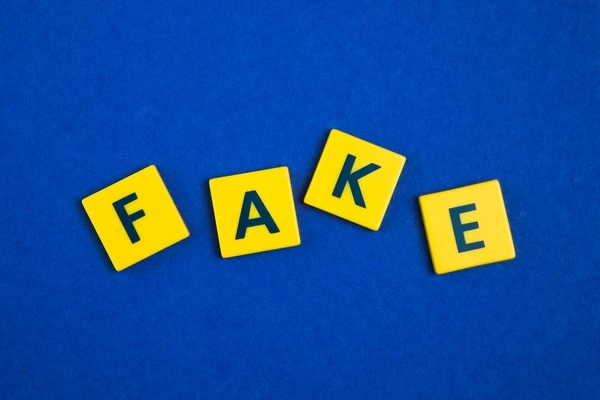How to avoid counterfeit medications with Online Pharmacies Canada
|
Reading time: 6 minutes
|

Key Takeaways
- Counterfeit medications contain ineffective or harmful ingredients, incorrect dosages, and may be contaminated.
- They enter the market through unregulated online pharmacies, dubious stores, street vendors, and compromised supply chains.
- Protect yourself by purchasing from reputable sources like Online Pharmacies Canada, being aware of the risks, educating yourself on identifying counterfeit drugs, and reporting suspicious products.
Counterfeit medications are fake medicines. They are made to look like real medicines, but they are not. They can be dangerous because:
- They might not contain the right ingredients. This means they might not work, or they might make you sicker.
- They might contain harmful ingredients. In some cases, counterfeit medications may contain the wrong active ingredients altogether. This can be extremely dangerous, as the unintended ingredients may cause serious side effects or interact negatively with other medications the patient is taking.
- They might not be the right strength. Even if the correct active ingredient is present, counterfeit medications may contain incorrect amounts of it. Too little of the active ingredient can render the medication ineffective, while too much can lead to an overdose and potentially life-threatening complications.
- They might be out of date. Out-of-date medications can pose a significant risk to public health. These medications may lose their potency over time, making them ineffective in treating the condition they are intended for.
- They might be contaminated. Counterfeit medications may be manufactured in unsanitary conditions, leading to contamination with harmful substances such as bacteria, heavy metals, or other toxins. These contaminants can cause a range of adverse health effects, from mild illness to severe organ damage or even death.
Counterfeit medicines can make people very sick, or even kill them. They can also make it harder to treat diseases because they can lead to drug resistance. That means the real medicines might not work as well anymore.
Counterfeit medicines are a global problem, and they can be found anywhere. It is important to be careful when you buy medicines, and to make sure you buy them from a reputable source.
How can you come across counterfeit medications
People might accidentally buy counterfeit medications in several scenarios:
1. Unregulated Online Pharmacies
The convenience and anonymity of online shopping have led to a surge in illegitimate online pharmacies. These platforms often lack proper licensing, verification, or quality control measures, making them a breeding ground for counterfeit drugs.
They may attract customers with significantly lower prices, promises of hard-to-find medications, or a lack of prescription requirements. However, the risks far outweigh the potential benefits, as consumers may receive fake, substandard, or even dangerous products.
2. Physical Stores with Dubious Sources
While most established pharmacies adhere to strict regulations and source their medications from reputable suppliers, some smaller independent pharmacies or unauthorized sellers may unknowingly or intentionally stock counterfeit medicines.
This could be due to a lack of awareness, attempts to cut costs, or involvement in illegal supply chains. It is essential to be cautious when purchasing medications from unfamiliar or unverified sources, even in physical stores.
3. Street Vendors and Informal Markets
In certain regions, particularly in developing countries or areas with limited access to healthcare, medications are often sold by street vendors or in informal markets.
These products are highly likely to be counterfeit, as they lack any form of regulation, quality control, or traceability. The lack of oversight makes it easy for counterfeiters to exploit vulnerable populations, putting their health and safety at risk.
4. Counterfeit Drugs Mixed into the Legal Supply Chain:
In some cases, counterfeit drugs can infiltrate the legitimate supply chain through compromised wholesalers or distributors. This makes it difficult to distinguish them from authentic medications.
Why it happens:
Lack of Awareness
Many individuals are simply unaware of the extent of the counterfeit drug problem and the potential dangers associated with these products.
They may not know how to differentiate between legitimate and illegitimate sources, or how to verify the authenticity of medications. This lack of awareness can lead to uninformed decisions and expose individuals to unnecessary risks.
Cost
Counterfeit medications are often sold at significantly lower prices than genuine ones, making them an appealing option for individuals facing financial constraints or seeking to reduce their healthcare expenses.
This is particularly true for expensive treatments or medications for chronic conditions. However, the allure of lower prices can blind individuals to the potential risks and consequences of using counterfeit products.
Limited Access to Healthcare
In certain regions or communities, access to healthcare facilities and genuine medications may be limited or non-existent. This can force individuals to turn to alternative sources, such as informal markets or unregulated online pharmacies, even if they suspect the products might be counterfeit.
The desperation for treatment can outweigh the concerns about the authenticity and safety of the medications.
Desperation
Patients suffering from serious or chronic illnesses, particularly those with limited treatment options, may become desperate for relief and willing to try anything, including counterfeit medications.
The hope for a cure or improvement in their condition can overshadow the potential risks associated with using unverified or unregulated products. This desperation can be exploited by counterfeiters who prey on vulnerable individuals seeking solutions.
Commonly Counterfeited Medications
In industrialized nations, counterfeiters often target high-priced medications due to the potential for greater profit margins. This includes:
-
New and Expensive Medications:
Novel treatments like hormones, corticosteroids, cancer drugs, and antiretrovirals are frequently counterfeited.
These medications often involve complex manufacturing processes and high research and development costs, making them lucrative targets for illegal replication. Counterfeit versions may lack the active ingredients, contain incorrect dosages, or be contaminated with harmful substances.
-
Lifestyle Drugs:
Medications that address lifestyle concerns such as sexual dysfunction (e.g., erectile dysfunction drugs), hair loss treatments, and weight loss aids are also commonly counterfeited.
These drugs often have a high demand, as they offer solutions to common issues and may be seen as less essential than medications for life-threatening conditions. This makes them attractive targets for counterfeiters who can exploit consumer demand for quick fixes and cheaper alternatives.
-
Psychotropic Drugs:
Medications affecting the mind and behavior, including opiate-based painkillers, tranquilizers, stimulants, and depressants, are also susceptible to counterfeiting.
The potential for addiction and dependence on these drugs can create a black market where counterfeiters can thrive. Counterfeit psychotropic drugs may contain incorrect ingredients, varying dosages, or harmful additives, posing serious risks to users who may be unaware of the dangers.
How to avoid counterfeit medications
For affordable and safe medications, consider purchasing from reputable online Canadian pharmacies like Online Pharmacies Canada, which is verified by the Canadian International Pharmacy Association (CIPA).
You can read real customer reviews and learn more about our commitment to quality and safety on our website.
We have been helping people in your position access safe and affordable medications since 1999.
Information provided on this website is for general purposes only. It is not intended to take the place of advice from your practitioner







